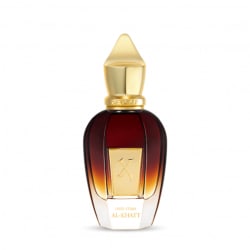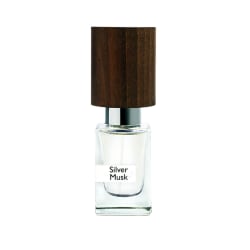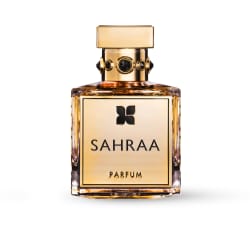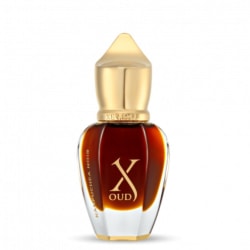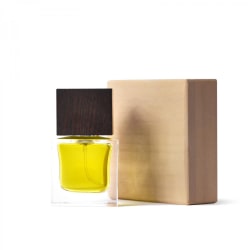Fragrances with pheromones
Written by GlenN lauritz andersson & denis vasilije, perfume experts
Pheromones have long been a mythical ingredient in perfumes. In short, pheromones can be described as scent molecules that signal various things, ranging from sexual availability to aggression. Although science is still debating the subject, human pheromones are said to be a mixture of odorous substances that can be detected by the recipient's olfactory organs even at very low concentrations and often completely unconsciously. In the animal world, it is very common for animals to communicate with the outside world using pheromones.

For humans, the importance of pheromones as a communication tool has diminished over millions of years of evolution. In particular, humans' improved visual and auditory senses have blunted the interpretation of pheromones in humans. Pheromones no longer give us a clear picture of the message, but rather leave us with a feeling.
A chafing element makes the perfume interesting and complex
A clear trend in the perfume industry in recent years has been to try to recreate pheromones in perfume. We dare say they have never been so close. Maybe it's not the same technical composition that our scientists are referring to when they talk about pheromones, but nevertheless, it's about scents that remind us of sex, anus, sweat and body fluids. Scent signals that undoubtedly affect us at a deeper level than the usual citrus perfume in the duty-free shop.
It may be off-putting to some, but these perfumes are not meant to smell good in the same simple way as a designer fragrance intended for the masses. The purpose is quite different and the perfume is considerably more complex than the layman generally appreciates.

A common feature of the perfumes in our selection is the constant presence of animal scent notes, including musk. Musk was historically extracted from the deer's musk gland and the 'organic' note that musk gives the perfume has been maintained even though today's animal musks are exclusively chemically produced. Musk gives the perfume a depth and a dirty edge that makes the brain think in completely different ways than cotton candy and citrus groves.
In some of the fragrances, such as Xerjoff Oud Stars Al-Khatt, the sex scent is so noticeable that it almost completely takes over. However, the musk note (which today is mostly a synthetic ingredient) can also be used to create a little titillating, erotic tocuh in a fresh and crisp context. One such example is the discreet Silver Musk from Nasomatto, a musk-based perfume with a distinctly unisex character where the inclusion of white synthetic musk lends an almost floral yet piquant and animalic note to an otherwise careful, fresh composition.
In the category of "sweet" oud perfumes, we also find the elegant Sahraa from French Fragrance du Bois, an animalic yet soft composition that leans more towards the sophisticated and refined, epithets often associated with this luxury brand from Paris. those looking for the animalic and a bit challenged but still wanting something with a European gold edge should not be disappointed.
We also find the same softness in Gold I (also called Al Wasl) from the Abu Dhabi brand Widian. In the opening there is a rather distinctive, almost carnal tone that leans towards the sweet and animalic but which in the drydown develops like a pleasant ryamatta on the skin and its fresh notes of apples and black pepper provide balance.
Xerjoff Oud Stars Mamluk is another perfume that evokes pheromones. The scent is sweet, heavy, dark and full of Oud, the world's most expensive resin derived from the Aquilaria tree and very common in oriental perfumes. This fragrance is not for everyone. In return, it gives the right owner poise, harmony and tranquillity. Here too, the sexual allusion is ever-present, though not nearly as much as in its sister fragrance Al-Khatt, for example. For those who prefer pure oils (or what is known in the fragrance world as attars), Kampuchea Noir from the same brand can be a good choice, where the oriental blends with a distinct woodiness that balances the animalic notes of the oud.
Animalic fragrance notes appear again and again. Notes reminiscent of stables and zoos. In order to appeal to us humans, it is said that a perfume must have an edgy and chafing element to complement the beautiful and comforting. An abrasive element makes the perfume interesting and complex and can also create surprises, not least in its associations.
An example of how organic, animal-inspired fragrances don't have to be "dirty" but still sufficiently expressive and experimental is Hasunoito from Japan's Di Ser. Here the stable notes are taken to the extreme, but instead of flirting with manure and unclean elements, we are met with clean, warm hay and goats, which by the way are nicely balanced on the skin and settle into warm woody notes on the skin after a few hours. It doesn't get more pure and genuine, yet startlingly animalic, than this.

